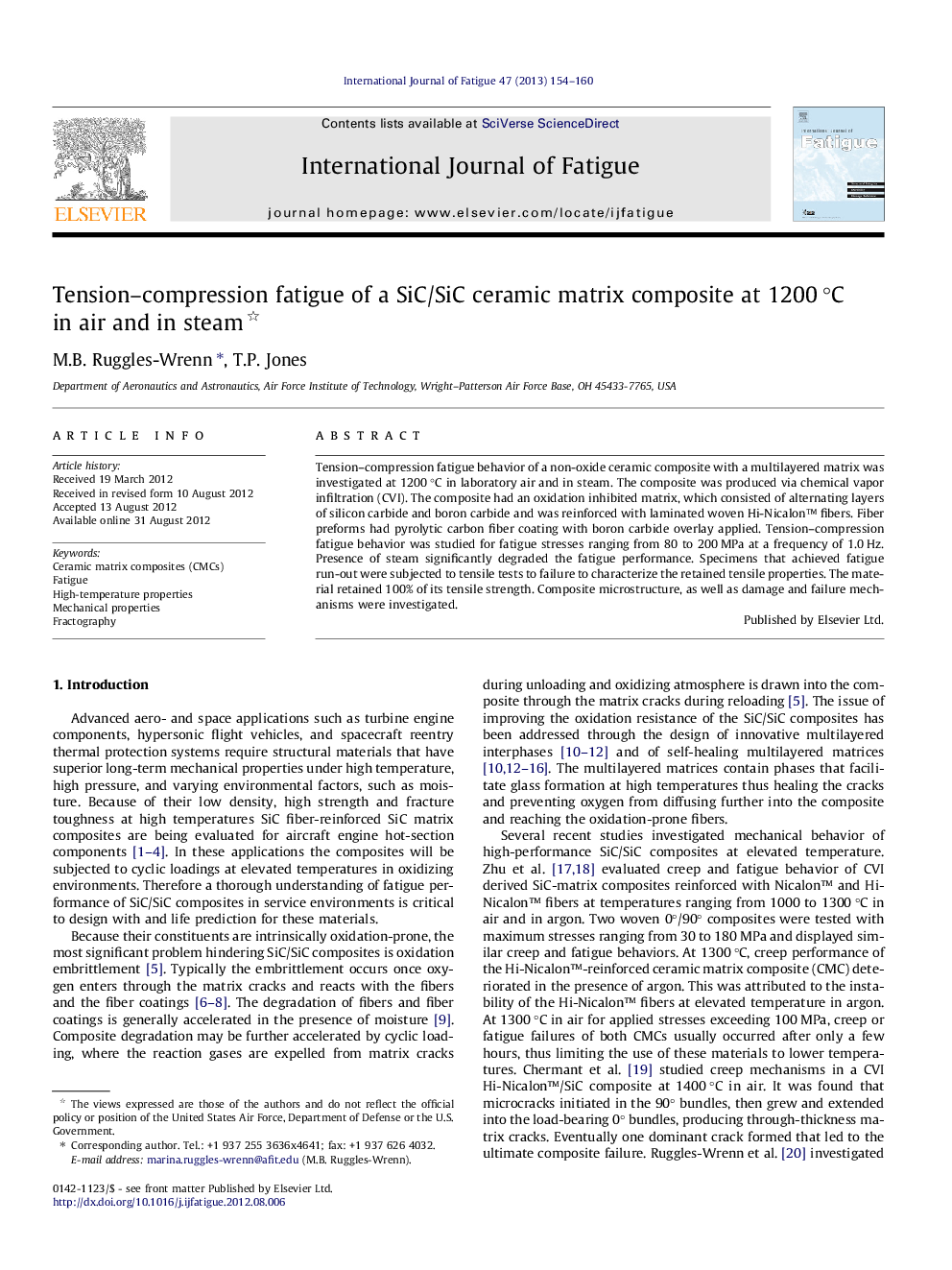| Article ID | Journal | Published Year | Pages | File Type |
|---|---|---|---|---|
| 780926 | International Journal of Fatigue | 2013 | 7 Pages |
Tension–compression fatigue behavior of a non-oxide ceramic composite with a multilayered matrix was investigated at 1200 °C in laboratory air and in steam. The composite was produced via chemical vapor infiltration (CVI). The composite had an oxidation inhibited matrix, which consisted of alternating layers of silicon carbide and boron carbide and was reinforced with laminated woven Hi-Nicalon™ fibers. Fiber preforms had pyrolytic carbon fiber coating with boron carbide overlay applied. Tension–compression fatigue behavior was studied for fatigue stresses ranging from 80 to 200 MPa at a frequency of 1.0 Hz. Presence of steam significantly degraded the fatigue performance. Specimens that achieved fatigue run-out were subjected to tensile tests to failure to characterize the retained tensile properties. The material retained 100% of its tensile strength. Composite microstructure, as well as damage and failure mechanisms were investigated.
► At 1200 °C tension–compression fatigue is more damaging than tension–tension fatigue. ► Tension–compression fatigue causes more matrix cracking than tension–tension fatigue. ► At 1200 °C presence of steam degrades the tension–compression fatigue lifetimes. ► Damage and failure of the composite are due to oxidation embrittlement.
